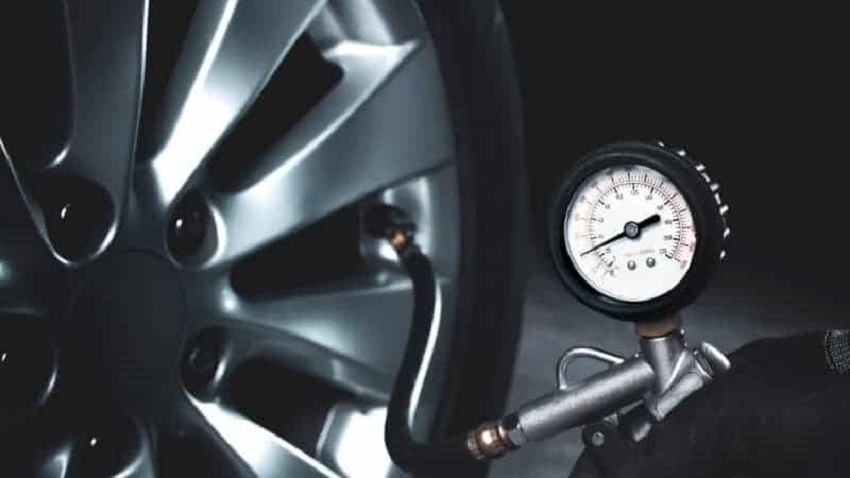Have you ever wondered about the importance of maintaining proper tire pressure? In this article, we will explore the benefits of nitrogen tire inflation and provide you with a step-by-step guide on how to check nitrogen tire pressure. Following these simple steps ensures that your tires are properly inflated and enjoy a safer and more efficient driving experience.
Proper tire pressure is crucial for several reasons. It ensures optimal tire performance, including better fuel efficiency and improved handling. Secondly, it enhances tire lifespan by reducing wear and tear. Lastly, maintaining proper tire pressure contributes to overall road safety, as underinflated or overinflated tires can lead to accidents and decreased vehicle stability.
What is Nitrogen Tire Inflation?
Nitrogen tire inflation is replacing regular air with pure nitrogen in tires. To discover how to tell if someone put a screw in your tire, it’s important to understand the benefits of nitrogen. Nitrogen has larger molecules than oxygen, which helps reduce the rate of pressure loss in tires over time. Additionally, nitrogen minimizes moisture content, preventing rust and corrosion on the wheel rim. However, when determining if someone has inserted a screw or any other foreign object into your tire, there are a few signs to look out for.
Benefits of Nitrogen Tire Inflation
There are several benefits to inflating your tires with nitrogen. Firstly, nitrogen-filled tires experience less pressure loss over time, resulting in more consistent tire pressure. This means fewer visits to the gas station to check and adjust tire pressure. Secondly, nitrogen reduces the risk of tire blowouts, especially during hot weather or long drives. Lastly, nitrogen inflation helps maintain proper tire pressure for an extended period, improving fuel efficiency.
How to Check Nitrogen Tire Pressure
Checking nitrogen tire pressure is a simple process that can be done at home or a tire service center. Here is a step-by-step guide to help you:
- Gather the necessary tools: You will need a tire pressure gauge, a nitrogen source, or an air compressor equipped with a nitrogen generator.
- Park your vehicle on a level surface: Make sure the car is stationary and the parking brake is engaged.
- Locate the recommended tire pressure: Refer to your vehicle’s owner’s manual or the tire placard on the driver’s side door jamb or inside the fuel door. The recommended pressure is usually in pounds per square inch (PSI).
- Remove the valve stem cap: Unscrew the valve stem cap from the tire you want to check.
- Press the tire pressure gauge onto the valve stem: Firmly press the gauge onto the valve stem until you hear a slight hissing sound. This indicates that the gauge is properly connected.
- Read the tire pressure: The gauge will display the current tire pressure. Compare it to the recommended pressure for your vehicle.
- Adjust the tire pressure: If it is too low, add nitrogen or regular air until it reaches the recommended level. If the pressure is too high, release some air using the gauge or a small tool.
- Repeat for all tires: Check the pressure of all your tires using the same process.
- Replace the valve stem caps: Once you have checked all the tires, screw the valve stem caps back on securely.
- Regularly monitor tire pressure: It is important to check your tire pressure regularly, at least once a month or before long trips.
Understanding the Recommended Nitrogen Pressure
The recommended nitrogen pressure for your tires can vary depending on the vehicle and its specifications. It is essential to refer to the owner’s manual or the tire placard to determine the correct pressure. Remember that overinflating or underinflating the tires can affect their performance and safety.
Tools and Equipment Needed for Checking Nitrogen Tire Pressure
To check nitrogen tire pressure, you will need the following tools and equipment:
- Tire pressure gauge: This device measures the pressure inside the tire accurately.
- Source of nitrogen or air compressor with nitrogen generator: Nitrogen can be obtained from a nitrogen generator or specialized tire service centers.
Common Mistakes to Avoid
When checking nitrogen tire pressure, it is important to avoid the following common mistakes:
- Using an incorrect tire pressure gauge: Ensure you use a reliable and accurate tire pressure gauge.
- Neglecting regular checks: Regularly check your tire pressure regularly to maintain optimal performance and safety.
- Ignoring the recommended pressure: Always follow the manufacturer’s recommended tire pressure for your vehicle.
FAQs
Q: Is nitrogen tire inflation necessary for all vehicles?
A: Nitrogen tire inflation is not mandatory for all vehicles, but it offers benefits such as better pressure retention and improved fuel efficiency.
Q: Can I mix nitrogen with regular air in my tires?
A: Mixing nitrogen with regular air is not recommended, as it may compromise the benefits of nitrogen inflation.
Q: Can I check nitrogen tire pressure with a regular tire pressure gauge?
A: A regular tire pressure gauge can be used to check nitrogen tire pressure.
Q: How often should I check my tire pressure?
A: It is recommended to check your tire pressure at least once a month or before long trips.
Q: Where can I find nitrogen for my tires?
A: Nitrogen can be obtained from tire service centers or by using an air compressor with a nitrogen generator.
Conclusion
Maintaining proper tire pressure is crucial for your safety, vehicle performance, and tire lifespan. Nitrogen tire inflation offers several benefits, including better pressure retention and fuel efficiency. Following the step-by-step guide in this article, you can easily check your nitrogen tire pressure and ensure a smoother and safer driving experience.





